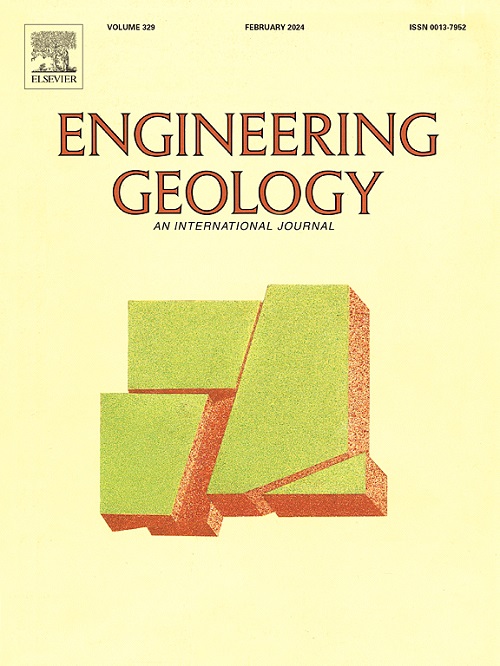Cultural activity and impact of extreme weather events revealed by ambient seismic noise and perspective on quick clay failure monitoring in Oslo, Norway
IF 6.9
1区 工程技术
Q1 ENGINEERING, GEOLOGICAL
引用次数: 0
Abstract
The study of urban seismic noise offers various approaches to monitor cities, from source identification to structural investigations. We demonstrate its potential to monitor cultural activity and quick clay failure in Oslo, Norway using low-cost seismic sensors. We identify train passages, a rock concert, construction blasts, local earthquakes and a meteor. To retrieve seismic velocity variations in the near subsurface, we apply seismic interferometry to three years of urban noise (1–4 Hz) recorded at four sensors, two in a quick clay risk area. Despite urban noise variability, we obtain stable noise correlation functions using 1-day-stacks. The extracted velocity variations reveal changes in the ground due to freezing and thawing as well as due to pore pressure variations related to snowmelt and rainfall. Along with anti-correlation of velocity variations and pore pressure, we observe hysteresis associated to the soil’s water retention under different moisture conditions, which could provide insights into potential landslide hazard. A sharp velocity drop accompanying the heavy rainfall associated with an extreme weather event is observed. All these observations give us insights to what subsurface changes can be resolved and expected over longer time periods, which will allow us to identify unusual and permanent changes, e.g., related to quick clay. Theoretical dispersion curve analysis shows that lowering the velocity in a section of the sedimentary layer containing quick clay reduces surface wave velocities within the frequency range of interest. These results suggest that measuring velocity variations at our study site has the potential to detect quick clay instabilities.

求助全文
约1分钟内获得全文
求助全文
来源期刊

Engineering Geology
地学-地球科学综合
CiteScore
13.70
自引率
12.20%
发文量
327
审稿时长
5.6 months
期刊介绍:
Engineering Geology, an international interdisciplinary journal, serves as a bridge between earth sciences and engineering, focusing on geological and geotechnical engineering. It welcomes studies with relevance to engineering, environmental concerns, and safety, catering to engineering geologists with backgrounds in geology or civil/mining engineering. Topics include applied geomorphology, structural geology, geophysics, geochemistry, environmental geology, hydrogeology, land use planning, natural hazards, remote sensing, soil and rock mechanics, and applied geotechnical engineering. The journal provides a platform for research at the intersection of geology and engineering disciplines.
 求助内容:
求助内容: 应助结果提醒方式:
应助结果提醒方式:


